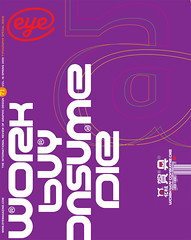Spring 2009
Peter Bil’ak
‘The majority are guided by historical understanding’
Peter Bil’ak is a Slovak writer and designer, principal of the type foundry Typotheque and a founding editor of Dot Dot Dot. He also teaches at the Royal Academy of Arts in the Hague.
I suppose every generation must have its Golden Age – Linotype had one, as did Berthold, ITC, Emigre, and FontShop – but a current Golden Age shared by all? Hmm.
Type design has matured into a creative discipline where a majority of typographers are guided by an historical understanding of the word, but there is room for experimentation. This is a sign of self-awareness in type design.
Consider the non-Roman characters in Adobe’s Garamond Premier Pro. There have been other Greek adaptations of famous typefaces, but usually they do not deviate from predominant biases or current market demands. Garamond Premier looks back and reinterprets the original faithfully. Its Greek letters are clearly different from the Latin characters. There may be little market need for such a typeface, but the Byzantine and scribal influences are a radical departure from twentieth-century norms, showing the designer’s confidence.
Even more curious is its Cyrillic version, considering that there are no models in Renaissance type. In Claude Garamond’s time, Russians used Old Church Slavonic, which is very distant both from contemporary Cyrillic and from the letters in Garamond Premier Pro, which is an amalgamation of historical periods, carefully researched and adapted for the 21st century.
Peter Biľak, designer, Netherlands
First published in Eye no. 71 vol. 18 2009
Eye is the world’s most beautiful and collectable graphic design journal, published quarterly for professional designers, students and anyone interested in critical, informed writing about graphic design and visual culture. It is available from all good design bookshops and online at the Eye shop, where you can buy subscriptions and single issues.

